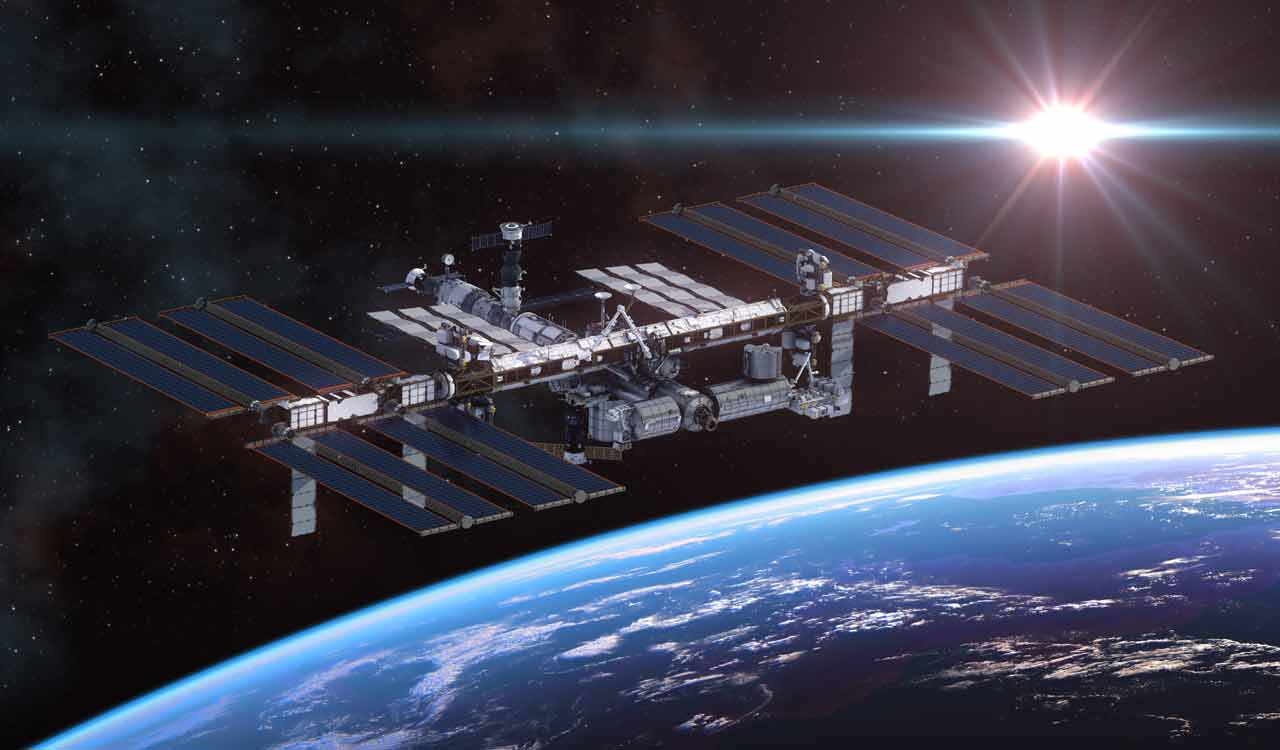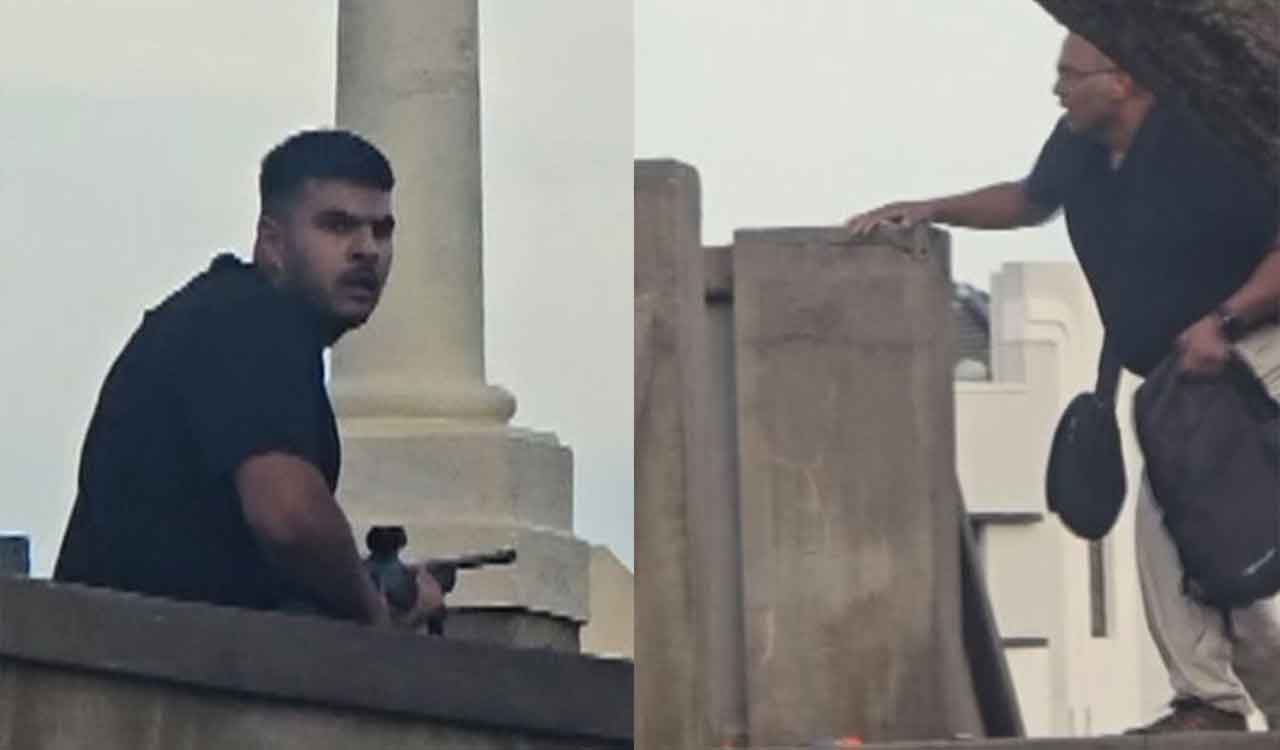Deorbiting ISS: How NASA, SpaceX will execute it?
NASA and ElonMusk's company recently outlined the plan to burn the space station up on reentry and plunge what's left into the ocean, ideally at the beginning of 2031 when it hits the 32-year mark.

SpaceX will use a powerful, souped-up capsule to shove the International Space Station (ISS) out of orbit once time is up for the sprawling lab.
NASA and ElonMusk’s company recently outlined the plan to burn the space station up on reentry and plunge what’s left into the ocean, ideally at the beginning of 2031 when it hits the 32-year mark.
Here’s an outline of how they plan to bring down the space station
Why get rid of the space station?
The space station is already is showing signs of age. Russia and the US launched the first pieces in late 1998, and astronauts moved in two years later. Europe and Japan added their own segments, and Canada provided robotic arms. By the time NASA’s shuttles retired in 2011, the station had grown to the size of a football field, with a mass of nearly 4,30,000 kilograms.
That strategy — already in place for station cargo and crew deliveries — will free NASA up to focus on trvaelling to Moon and Mars. The NASA could decide to extend the station’slife, too, if no commercial outposts are up there yet. The agency’s objective is to have an overlap so that scientific research is not interrupted.
BLURB:NASA figures the station will last until at least 2030. The goal is for private companies to launch their own space stations by then, with NASA serving as one of many customers
Why not bring it back to Earth?
NASA considered dismantling the space station and hauling the pieces back to Earth, or letting private companies salvage the parts for their own planned outposts. But the station was never intended to be taken apart in orbit, according to NASA, and any such effort would be expensive and also risky to the astronauts who would handle the disassembly. Besides, there’s no spacecraft as big as NASA’s old shuttles to bring everything down. Another option would be to boost the empty station to a higher, more stable orbit. But that, too, was dismissed given the logistical issues and the increased risk of space junk.
How will it be brought down?
Visiting spacecraft periodically boost the space station so it remains in an orbit 420 kilometres high. Otherwise, it would keep getting lower and lower until it plunged from orbit. NASA wants to ensure a safe reentry over a remote section of the South Pacific or the Indian Ocean, so that means launching a spacecraft that will dock to the station and steer it toward a watery grave.
Mostly, the deorbit module will guide the space station to a designated re-entry zone over a remote area of the Pacific Ocean, often referred to as the “spacecraftcemetery” or “PointNemo.” This area is far from human activity, reducing the risk of harm from any debris that does not burn up in the atmosphere.
NASA expects some denser pieces to survive, ranging in size from a microwave oven to a sedan, in a narrow debris field 2,000 kilometres long. NASA and its partners considered using three Russian supply ships for the job, but a more robust craft was needed. The call went out to industry and, in June, SpaceX won the contract for a deorbit vehicle.
What will the deorbit spacecraft look like?
SpaceX plans to use an ordinary Dragon capsule — the kind that carries supplies and astronauts to the space station — but with a much bigger trunk housing a record 46 engines and more than 16,000 kilograms of fuel.
The challenge will be creating a spacecraft powerful enough to guide the space station while resisting the tugs and forces from increased atmospheric drag during final descent.
This spacecraft will require an especially powerful rocket just to get to orbit, according to NASA. The capsule would be launched one and half years before the station’s planned demise.
Astronauts still would be aboard as it’s gradually lowered. Six months before the destruction, the crew would abandon ship and return home. Once the station is down to 220 kilometres, the Dragon would bring it down four days later.
BLURB:NASA gave SpaceX a USD 843 million contract to bring down the station — the biggest structure ever built off the planet
Key Considerations
- Safety: Ensuring the safety of people on Earth and any remaining space assets is the highest priority
- Environmental Impact: Minimising the environmental impact of the re-entry process
- International Collaboration: Coordination among all ISS partner nations to share responsibilities and resources
- Technological Challenges: Managing the technical challenges of controlling such a large structure during re-entry
Has this been done before?
NASA’s first space station, Skylab, came crashing down in 1979, with debris raining down onto Australia and the surrounding Pacific. The space agency had hoped one of the first space shuttle crews could attach a rocket to control Skylab’s descent or boost its orbit. But the shuttle wasn’t ready by then, with its first flight not until 1981. Ground controllers managed to send Skylab into a slow tumble, aiming for the Indian Ocean. But some pieces also landed in Western Australia. Russia has had more experience with incoming space stations. Mir operated for 15 years before being guided to a fiery reentry over the Pacific in 2001. Before that, several Salyut stations bit the dust.
Will anything be saved?
NASA wants to bring back some small items from inside the space station for museum display, like the ship’s bell and logs, panels with patches and other mementos. Those can come down in SpaceX supply ships in the final year or two. Unfortunately, they can’t bring home really big stuff.
China’s space station, Tiangong
Tiangong is a permanently crewed space station constructed by China and operated by China Manned Space Agency since 2022. It is China’s first long-term space station, part of the Tiangongprogramme and the core of the ‘ThirdStep’ of the China Manned Space Programme; it has a pressurised volume of 12,000 cubic ft, slightly over one third the size of the International Space Station. The space station aims to provide opportunities for space-based experiments and a platform for building capacity for scientific and technological innovation
Related News
-
Suspected Hyderabad link emerges in Sydney Bondi Beach shooting
-
With $600 bn net worth, Musk moves closer to becoming world’s first trillionaire
-
European leaders expected to cement support for Ukraine amid Washington pressure to accept deal
-
Australia PM Albanese proposes tougher national gun laws after Sydney shooting
-
Rupee volatile on Wednesday amid India-US trade uncertainty, FII outflows; Brent crude eases
5 mins ago -
Hyderabad: NSG conducts mock security exercise at Birla temple
6 mins ago -
Hyderabad: Two killed, one injured after speeding car crashes into roadside water vendor’s shed
9 mins ago -
Sensex, Nifty rebound in early trade as domestic buying offsets FII selling
5 mins ago -
Madhuri Dixit reveals why she has been doing fewer projects
20 mins ago -
Young man stabbed to death in Balapur area of Hyderabad
23 mins ago -
Telangana gram panchayat elections: Polling progresses at slow pace in Asifabad, Adilabad
33 mins ago -
Silver hits record high on MCX, jumps over 4 pc as rate-cut hopes fuel rally
35 mins ago




